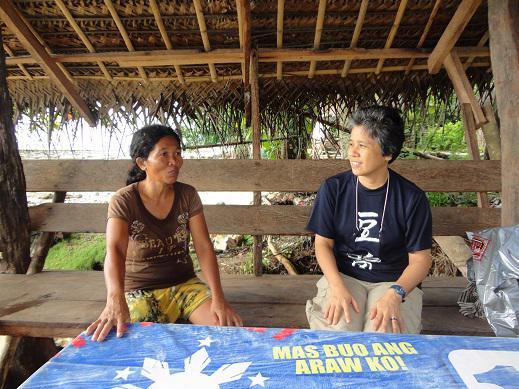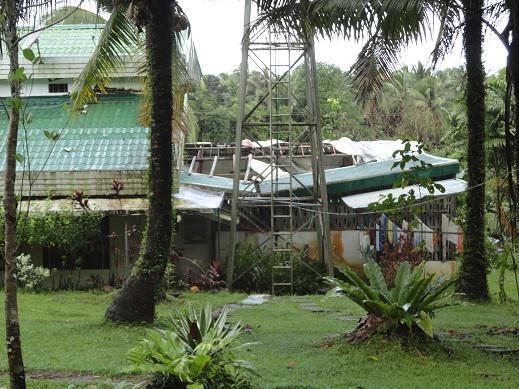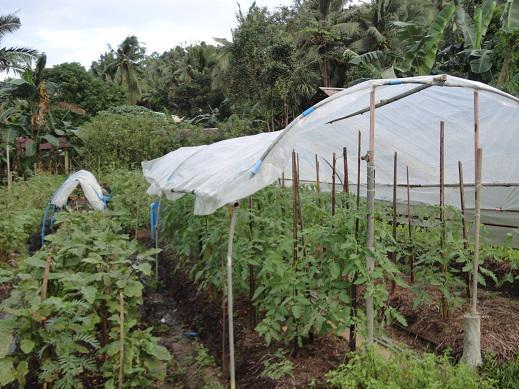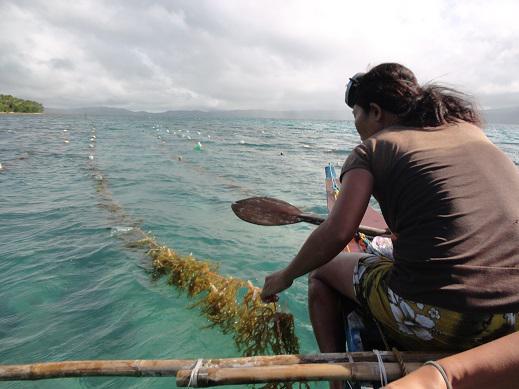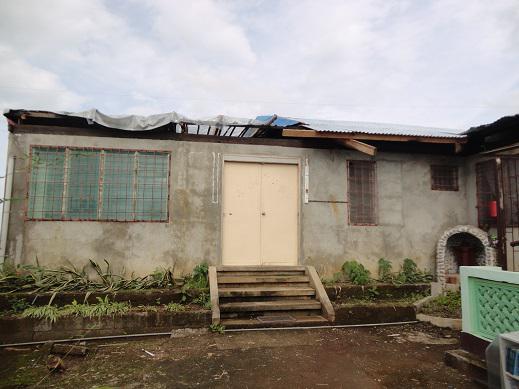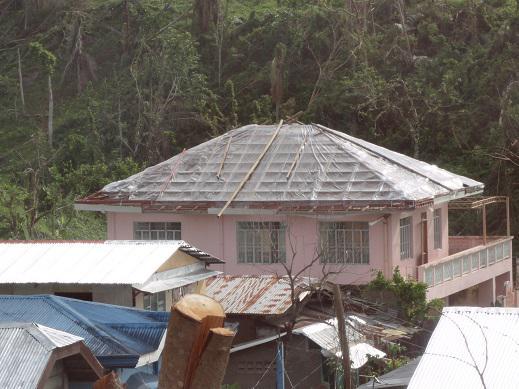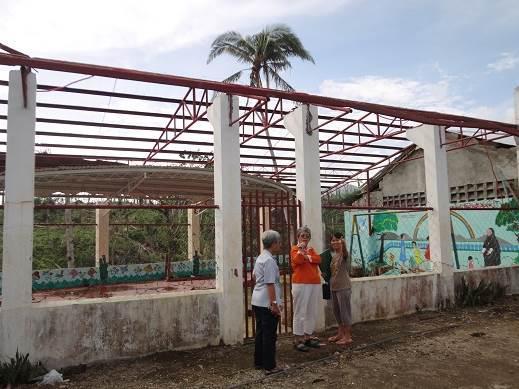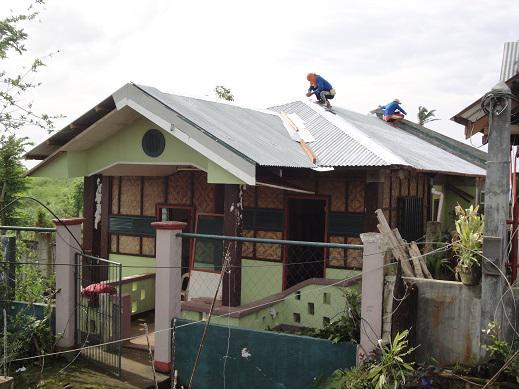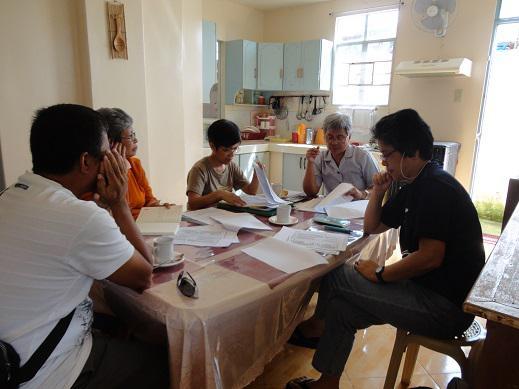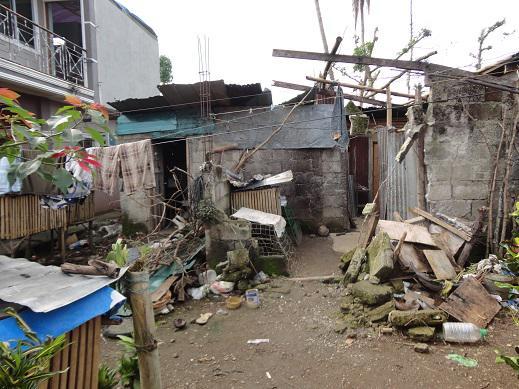Thank you so much for your generous solidarity with the victims of the super-typhoon Yolanda.
From January 5 to 10, 2014, two months after the super-typhoon Yolanda, I visited Northern Samar and Ormoc, Leyte via Tacloban which was one of the most badly hit areas. The purpose of the visit was to see the actual situation in the affected areas, to see how the released donations had been used for the victims, and to have a meeting for the planning of the rehabilitation.
Since Northern Samar was spared from the direct hit of the typhoon, the damage was not as bad as in Eastern Samar and in some parts of Leyte where the typhoon landed. Little by little daily life had been restored there although it will still take a lot of time and money to bring the life of the people back to the normal. In Sophie’s Farm of Sacred Heart Institute of Transformative Education (SHIFT) the repairs of the farm and the buildings were gradually taking place. Repairs had been started on the badly damaged green houses where vegetables like lettuce and tomatoes are normally grown.
During my stay in Northern Samar I also visited an NGO called SPPI with which the Society of the Sacred Heart shared the donation for the typhoon victims. SPPI helps low income families of Northern Samar by offering livelihood projects such as seaweed farming and organic farming. For the seaweed farming SPPI offers seedlings and skills training. They join these small scale farmers into a larger economic circle and assist them in the selling of seaweed to exporter. (Seaweed is used as an ingredient in toothpaste, ice cream, capsules for medicines, etc.) In a small island in Northern Samar called San Antonio Island all the seaweed that the farmers had planted was washed away by the typhoon. The farmers were able to start replanting the new seedlings that were purchased by SPPI in Mindanao last December. I found this to be a very good livelihood project that considers the natural environment as well as the capabilities of those who were not particularly skilled in other things. With a small amount of capital the seaweed farmers can become part of the larger economic system and produce extra-income. It still remains a great challenge to help the victims of the typhoon who lost their house and livelihood in Eastern Samar and Leyte forcing them to migrate to Northern Samar. It is important to support them by providing housing and livelihood so that they may return and pick up their lives again.
To help the victims, especially the children who had been traumatized by the typhoon, SHIFT offered the first debriefing counseling training seminar from January 13 to 15, 2014 at Sophie’s Farm. More than 100 persons from Samar and Leyte attended the seminar on the recommendation of the churches and educational institutions of the typhoon affected areas. In the near future, the second seminar will be held for the participants only from Northern Samar. These seminars are offered not only to help the healing process of the victims of this current typhoon, but also to prepare them to help other victims of predicted natural disasters in the near future.
After staying in Northern Samar for three days, I traveled to Ormoc, Leyte. It took eleven and a half hours by land. During the trip by van and walking around in the cities I saw the terrible destruction in Tacloban and Palo. I passed by a small Catholic School in Catbalogan in south-western Samar. The principal recounted her experience of visiting Eastern Samar and seeing the devastation of some private schools. It was heart-breaking to hear that the administrators of those small private schools in the very poor regions did not know how to begin to repair or reconstruct schools that were partially or totally destroyed. Public schools can receive some aid from the government and/or international organizations. However, it is difficult to get support for the small private schools which are serving the poor children in those areas. So, I talked with Sr. Digna Dacanay rscj, who is the principal of a small Catholic School in Northern Samar, to see how they could be helped. She is also the President of Eastern Visayas Association of Private Schools.
As I was traveling for some 100km in a public van, I saw coconut trees that had lost their leaves and houses, churches and schools without roofs. I thought the relief activities were over two months after the typhoon but I saw people with relief goods coming out of the big tents of the Philippine government agencies or international organizations such as UNICEF and Oxfam. In Tacloban City much typhoon debris and garbage was still piled up. Many shops were still closed. Seeing lights in some stores, I thought the electricity had been restored but then I heard the noise of generators as I walked through the city. Travelling by public van the two hours from Tacloban to Ormoc we experienced heavy rain and strong wind. While the public schools had started classes three days a week as of January 6, all the schools that I saw along the way to had no roofs. I also saw many big UNICEF white tents in school yards.
When I visited St. Philippine Duchesne Ormoc’s Workers Foundation, Inc. (SPDOWFI) one week after the typhoon, the SPDOWFI Center had no roof. This time some parts of the top of the Center were covered with plastic and new G.I. sheets instead of the usual roof. Sacred Heart Children’s Educational Center (SHCEC) was still without a roof. At least the roof frames had plastic covers and the typhoon waste, wet educational materials, destroyed equipment and furniture had been removed from inside of the class room. The wet floor was almost dry. The playground was still without any the roof, and the playground equipment needed to be repaired. The carpenters were installing the roof on the badly damaged staff house. The garden of SPDOWFI was cleaned up and the large trees that had toppled had been removed. Financial assistance is still needed to make the houses of eight families within the SPDOWFI community livable. Some families of the SHCEC have migrated because they have lost jobs or their houses were destroyed. So, fewer children were coming to SHCEC even if the classes had started. It will take some more months to bring everything back to normal in SPDOWFI. At this time moment it is difficult to obtain good quality materials for making repairs and carpenters are in extremely high demand. For these reasons it is not easy for us to carry out speedy building restorations. At least, SPIDOWFI has held a board meeting to approve the repair planning with the engineer who will help us.
We have been using and will be using the donations entrusted to the Society of the Sacred Heart, Philippine District for the victims of the super typhoon Yolanda for the following:
- Relief Activities, especially food;
- Repairs of SHIFT building and Sophie’s Farm in Northern Samar, Repairs of the buildings of SPDOWFI and the purchase of educational equipment and educational materials for the poor children and youth;
- Repair of the houses of the RSCJs and the houses of economically disadvantaged people for whom the RSCJs work in our apostolates;
- Debriefing Counseling seminars;
- Financial support for livelihood projects
- Aid for repairs of small private schools in Samar and Leyte.
The people still need more help to stand on their own feet again in the future.
The rehabilitation has started little by little. However, in Samar and Leyte the rainy season continues from January to March, and the life of the victims is still very hard because of the heavy rain brought by the tropical depression. While traveling long hours from Samar to Leyte I was looking at the leafless trees along the way. I felt the strong destructive power of nature, but at the same time, it is the powerful force of nature that brings new life. After the typhoon we have received so many prayers and such support from all over the world. There is still a long road to recovery in the Philippines and we continue to need a lot of support from generous, good-hearted people. Thank you again for your prayers and your expression of solidarity with those who suffer in the Philippines.
Yuka Arita rscj

